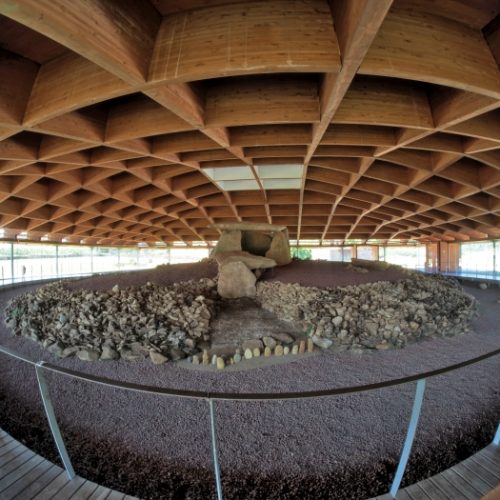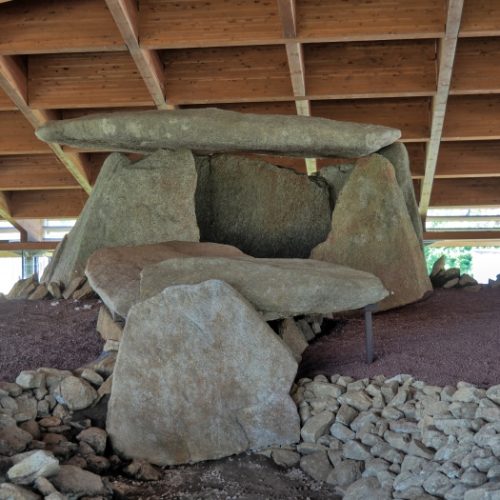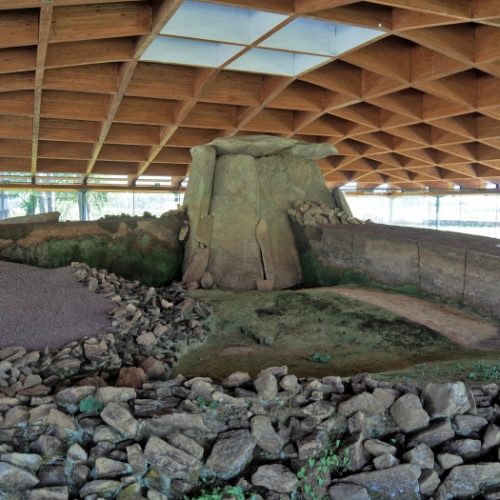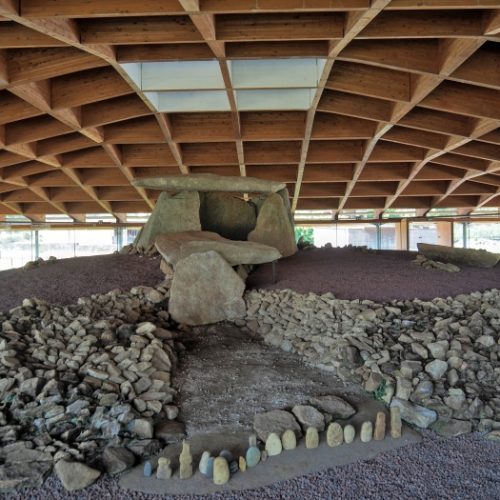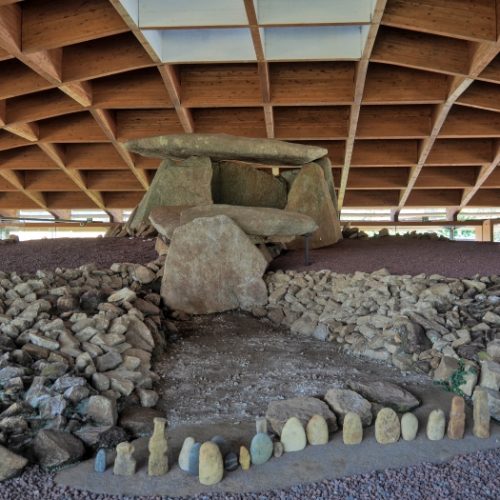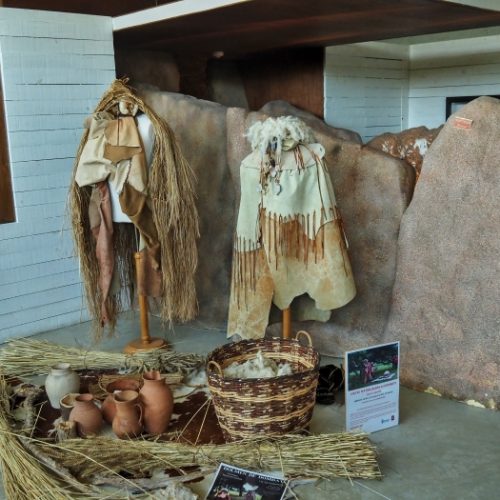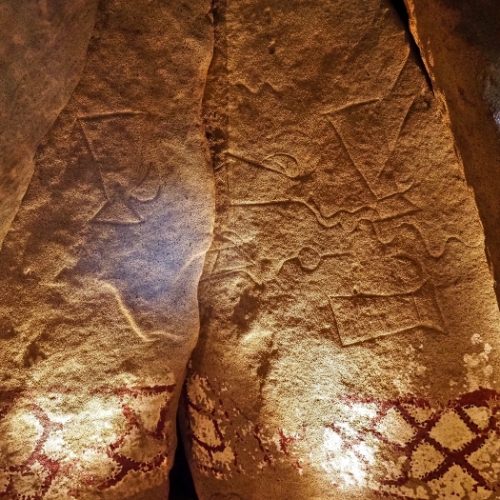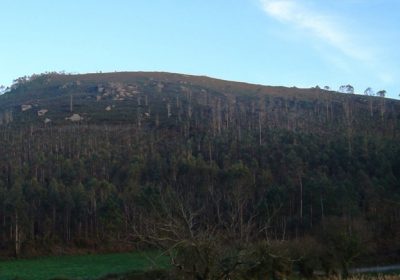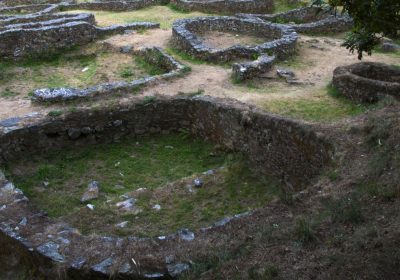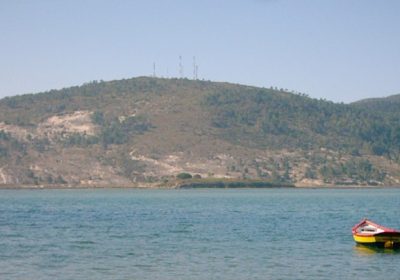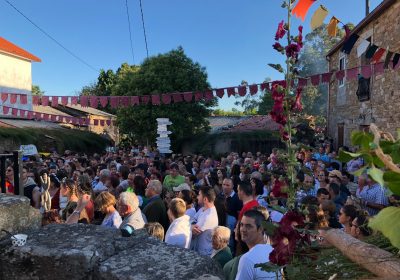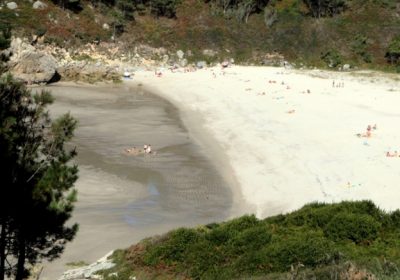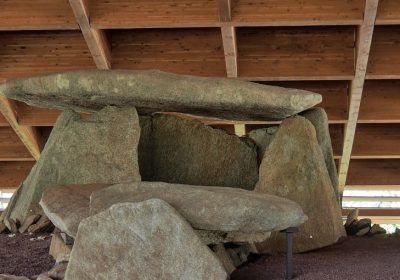The megalithic cathedral
Dombate is undoubtedly the most famous and emblematic dolmen in Galicia, described by many as the cathedral of Galician megalithism.
In fact, it is a two-in-one, because the tumulus that covers the monument houses two different dolmens. The so-called Ancient Dombate, of modest dimensions and built at the end of the fifth millennium and the Recent Dombate, much more monumental, built around 3,700 BC. The latter is the better known of the two and its dimensions are impressive, reaching 6 meters long and 4.5 meters high. The megalith consists of an east-facing chamber and corridor, built with large slabs that weigh up to 7.78 tonnes in the case of the apse.
The tumulus, also spectacular, has a diameter of 24 meters and a height of 1.8 meters. It is surrounded by a ring of stones and coinciding with the entrance you can see a kind of breastplate also made of stones. Right at the entrance, during the excavations, a set of anthropomorphic idols was located, placed vertically on the ground, fulfilling a function of protection of the tomb, as if they were a kind of symbolic lookouts.
But perhaps the most interesting element of this dolmen is the set of engravings and especially paintings found inside its chamber and along the corridor. They are made with the same technique as the dolmen of Pedra Cuberta (Vimianzo), in red and black colors on a base of white kaolin-based paint. At present they are not visible as it is not possible to access the interior of the dolmen for conservation reasons. But it is possible to admire them in an excellent life-size replica of the dolmen located in the same interpretation center that today houses the monument.

